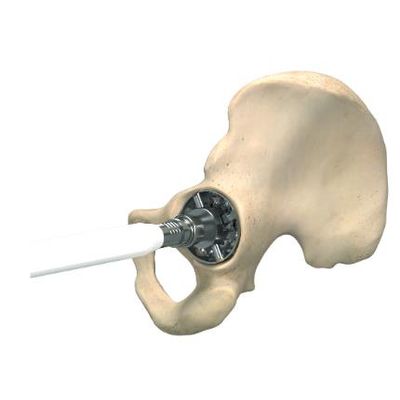

- Home
- Companies
- GO German Orthopedic Implants GmbH
- Products
- EasyHip - Model E-609 - Cemented Cups

EasyHip - Model E-609 - Cemented Cups
All the cemented Acetabular Cups can be implanted via any standard approach for total hip arthroplasty, depending on the surgeon`s level of experience.
Preoperative Planning
Good preoperative planning of the intervention is important in order to select the correct implant type and size, and the final position in the bone, according to the individual patient`s anatomy. Before performing a hip arthroplasty, the surgeon should carefully assess the patient`s clinical state and his/her level of physical activity.
In order to achieve an optimal outcome, the operation should be planned using suitable templates. The enlargement factor of the radiographs must correspond to the factor on the templates. The X-ray Templates of the cemented Acetabular Cups are available in the standard ratio of 1.1:1.
The size of the implant must be selected on the basis of suitable, informative radiographs in the a.p. and lateral planes. Each radiograph should be at least large enough for the entire template to be applied. It is often useful to take a second radiograph of the joint that is not being replaced. Inadequate preoperative planning can lead to an incorrect choice of implant and/or incorrect implant positioning.
Note
Preoperative planning provides an initial guide for the final situation. It cannot, however, be regarded as conclusive evidence of the most suitable size of implant. The final decision can only be taken intraoperatively.
The desired outcome is always to achieve a resilient, stable acetabular fossa and a strong lateral bony covering.
The inclination of the Cup should not be significantly greater or smaller than 45°. The anteversion should not be significantly greater or smaller than 15°.
Placement outside of these limits will reduce the range of motion and may subsequently lead to subluxation and/or dislocation of the joint.
